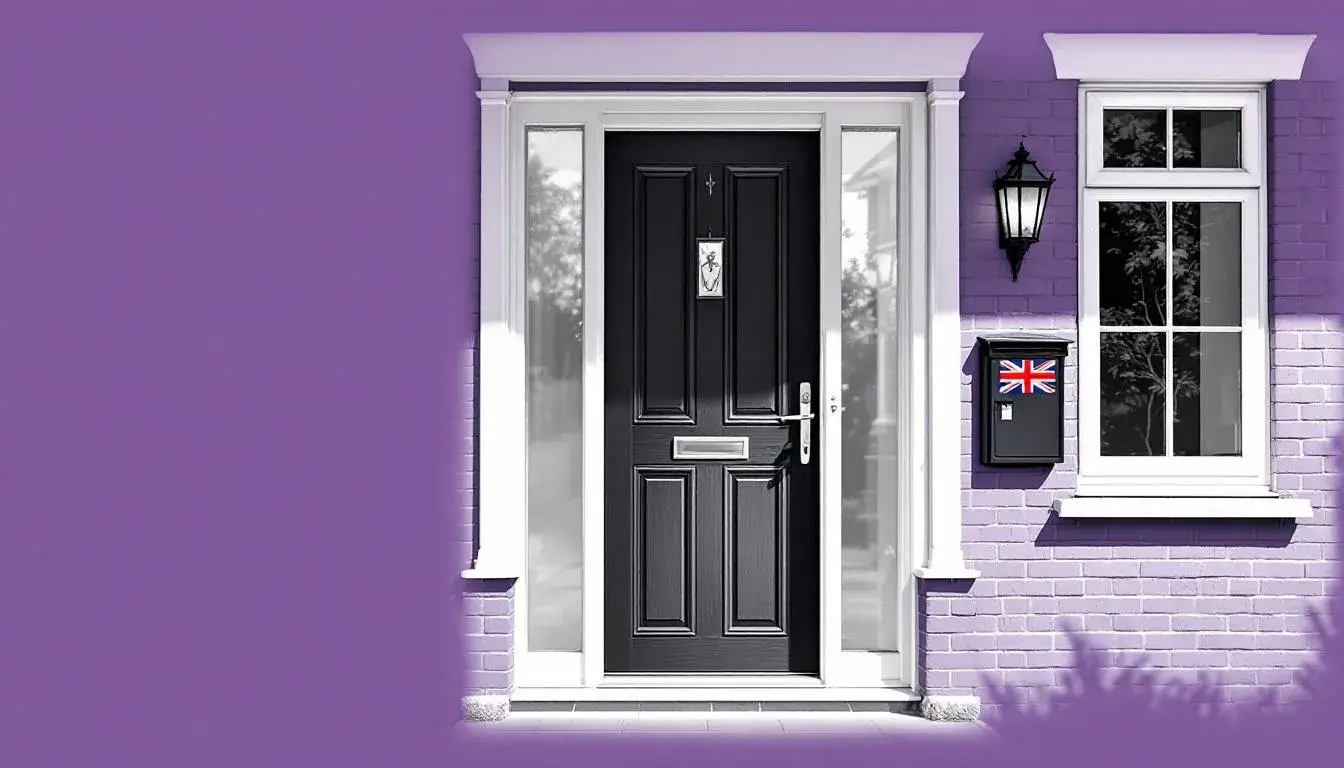
Top uses for secured loans for homeowners

The big picture - why secured loans are having a moment
Secured loans are not new, but their role in UK household finance has shifted. From Q1 2023 to Q1 2025, the number of secured loans issued rose 26%, with lending climbing from £333m to £470m. Awareness is catching up too - 54% of homeowners now consider secured loans when weighing up borrowing options. In practical terms, that means more people are using the equity in their homes to finance improvements, tidy up expensive debts, or cover large life events without disturbing a hard-won main mortgage rate.
Two forces are shaping this trend. First, economic pressure. Between 2020 and 2024 the homeowner loans market grew 31%, as households sought predictable repayments and lower rates than unsecured credit could offer. Second, flexibility. Lenders typically consider loans from £10,000 to £500,000, with terms that can stretch far beyond the typical personal loan, and many allow fee-free or unlimited overpayments so you can bring down interest costs sooner.
Renovations are leading the charge. Larger budgets are three times more likely to be funded with secured loans than smaller jobs, because the sums involved and the timescales fit better with property-backed finance. Debt consolidation follows closely - replacing multiple high-interest balances with one structured loan can cut monthly outgoings and simplify cash flow. There is also a growing list of one-off uses, from education to medical costs to weddings, where a secured loan offers a lower-rate alternative to stacking credit cards.
Importantly, secured loans are often arranged as a second charge on your property. That lets you access funds while protecting your existing mortgage deal - a valuable option if remortgaging would jeopardise a favourable fixed rate. With default rates reported stable in Q1 2025 by the Bank of England, confidence in the market remains steady.
Understanding APR is not just about percentages - it is about knowing what you will pay in real terms over time.
If you are comparing borrowing options, the headline is simple: secured loans can be a cost-efficient, versatile way to unlock property wealth for defined goals. The detail matters, and that is where a broker like Kandoo helps you weigh up rates, terms and lender criteria across the market.
Who should consider this route
If you are a UK homeowner with equity and a clear purpose for borrowing, secured loans are worth a close look. They are particularly suitable if you have a favourable mortgage rate you want to preserve, or if the amount required is larger than typical unsecured products comfortably offer. Households planning major renovations, consolidating expensive credit, or preparing for a known big-ticket cost often find the combination of lower rates and longer terms compelling.
They may also suit self-employed borrowers or those with complex income who find mainstream unsecured lending restrictive. Just remember the security is your property - the discipline here is to borrow only what you need, over a sensible term, with a realistic plan to repay early if your budget allows.
Key ideas to get straight
Second charge mortgage - a secured loan that sits behind your main mortgage, using your property as collateral without replacing your first charge.
Equity - the difference between your property value and what you still owe on your mortgage and any other charges.
APRC - the annual percentage rate of charge, including interest and certain fees, useful for comparing secured loans over similar terms.
LTV (loan to value) - the loan amount as a percentage of your property value, which influences pricing and eligibility.
Early repayment and overpayments - many lenders allow partial or full overpayments, sometimes unlimited, which can cut total interest.
Fixed vs variable rates - fixed gives payment certainty, variable can move with market rates and may be cheaper initially.
Affordability assessment - lenders test your income, expenses and commitments to ensure the loan is sustainable over the term.
Popular ways homeowners use secured loans
Home improvements and extensions Large renovation budgets - loft conversions, kitchen extensions, energy upgrades - often exceed unsecured limits. Secured loans offer lower rates, long terms and predictable repayments that align with project timelines.
Debt consolidation Rolling multiple high-interest debts into one loan can reduce monthly outgoings and simplify finances. The key is to avoid running balances back up and to consider total interest over the longer term.
Big life events and essential costs Weddings, private medical procedures or education fees can be financed at lower rates than credit cards. Overpayment options help you clear the balance faster if your income improves.
Car purchases and electric vehicle upgrades For higher-value vehicles, a secured loan can beat dealer finance or unsecured personal loans on rate and flexibility, particularly if you plan to repay early.
Business start-up or investment in equipment Some homeowners fund a new venture or buy tools and machinery with property-backed credit. Lenders will still assess affordability based on personal income, not business forecasts.
Energy efficiency and green retrofits Heat pumps, insulation and solar are capital intensive. Spreading costs at a competitive rate can bring forward savings on energy bills and improve EPC ratings.
Standout thought: Protecting a great mortgage rate while funding progress is often the smartest move.
What it could cost and why it matters
| Factor | What it is | Typical impact | Risk considerations |
|---|---|---|---|
| Interest rate | Price you pay to borrow | Usually lower than unsecured credit | Variable rates can rise, increasing repayments |
| Term length | Years to repay the loan | Longer terms reduce monthly cost | Longer terms increase total interest paid |
| Fees | Arrangement, valuation, legal fees | Added to the loan or paid upfront | Adding fees increases interest over time |
| LTV banding | Loan size vs property value | Better LTV can secure sharper rates | High LTV reduces flexibility and headroom |
| Overpayments | Extra payments beyond minimum | Cuts interest and shortens term | Early repayment charges may apply on some deals |
Do you qualify
Eligibility often starts with equity. Lenders look at your property value, outstanding mortgage and any other charges to determine a workable loan to value. Credit history matters, but a few historic blips may not be a deal-breaker if affordability is strong and the LTV is conservative. Income is verified through payslips, tax calculations or company accounts, and regular expenses are assessed to ensure the repayment is sustainable.
Your intended use can influence terms. Renovation funding with clear budgets and contractor quotes is straightforward. Debt consolidation may require evidence of balances to be settled on completion. If you are self-employed, be ready to evidence income over a longer period. Property type also counts - standard construction is simplest, while non-standard properties may restrict lender choice or pricing.
The security is your home, so lenders take a cautious view. That caution can work in your favour by delivering lower rates than unsecured alternatives. A broker can map your profile to lender criteria quickly, saving time and avoiding unnecessary credit checks.
From enquiry to funds - the practical steps
Define the purpose, amount and ideal monthly budget.
Check your equity, credit file and current mortgage details.
Compare secured loan rates, terms and potential fees.
Obtain an agreement in principle to gauge eligibility.
Submit documents - ID, income, statements and project quotes.
Property valuation arranged by the lender where required.
Receive a formal offer and review key facts document.
Complete legal checks and draw down funds to your account.
Advantages and trade-offs at a glance
| Pros | Cons |
|---|---|
| Lower rates than unsecured borrowing | Your property is at risk if you do not repay |
| Protects your main mortgage rate | Longer terms can increase total interest |
| Higher borrowing limits for big projects | Fees and charges can add to overall cost |
| Flexible terms with potential overpayments | Variable rates can rise over time |
| One payment for consolidated debts | Temptation to reborrow after consolidating |
Red flags and smart checks before you commit
Take a hard look at total cost, not just the headline rate. A longer term may ease monthly pressure but can increase what you pay overall. If you are consolidating debts, close or reduce limits on cards once balances are cleared to avoid drifting back into expensive credit. Stress test repayments at a higher rate if you are considering a variable deal. For renovations, build a contingency into your budget and confirm that funds will be released in time for staged payments. Finally, read early repayment terms closely so you know exactly how overpayments will be applied and whether charges could apply in the first years.
If not this, then what
Remortgage Suitable if your current mortgage is ending soon and a full refinance will not worsen your rate. Can be cost efficient, but you risk losing a favourable deal mid-fix.
Unsecured personal loan Faster and simpler for smaller sums. Rates are typically higher and terms shorter, which can push up monthly repayments.
Credit card or 0% balance transfer Useful for short-term, manageable spends. Risky for large projects due to revert rates and the discipline required to clear before promotion ends.
Government schemes and grants For energy upgrades, check if regional grants or schemes can reduce the amount you need to borrow at all.
Frequently asked questions
Q: What are the most common uses for secured loans? A: Home renovations and debt consolidation top the list, followed by large expenses like medical procedures, education fees and weddings. Some also fund vehicles, business equipment and energy upgrades.
Q: How do secured loans compare with unsecured borrowing on cost? A: Rates are typically lower because the loan is backed by your property, so lender risk is reduced. For larger or longer-term borrowing, the savings can be significant.
Q: Will a secured loan affect my main mortgage? A: Usually it is set up as a second charge, leaving your primary mortgage untouched. That helps you protect a good rate while accessing additional funds.
Q: Can I repay early or make overpayments? A: Many lenders allow fee-free or unlimited overpayments, which can cut interest and shorten the term. Always check the product specifics for any early repayment charges.
Q: Is the market stable right now? A: Yes. Default rates on secured loans were reported stable in Q1 2025 and lenders expect that to continue, supporting confidence in the sector.
Q: How much can I borrow? A: It varies by lender and your profile, but ranges of £10,000 to £500,000 are common, subject to equity, affordability and property type.
Ready to explore your options
If a secured loan fits your goal, compare whole-of-market options and model repayments over different terms before you commit. Kandoo, a UK-based retail finance broker, can help you assess affordability, check lender criteria and secure a suitable rate without disturbing your main mortgage. Taking time now to structure the right facility can save you thousands over the life of the loan.
Important information
This article is for general information only and is not financial advice. Secured loans use your property as collateral - your home may be repossessed if you do not keep up repayments. Always consider professional advice tailored to your circumstances.
Buy now, pay monthly
Buy now, pay monthly
Some of our incredible partners
Our partners have consistently achieved outstanding results. The numbers speak volumes. Be one of them!


C4W LTD

GLOBAL SCHOOL OF TRAINING LIMITED










